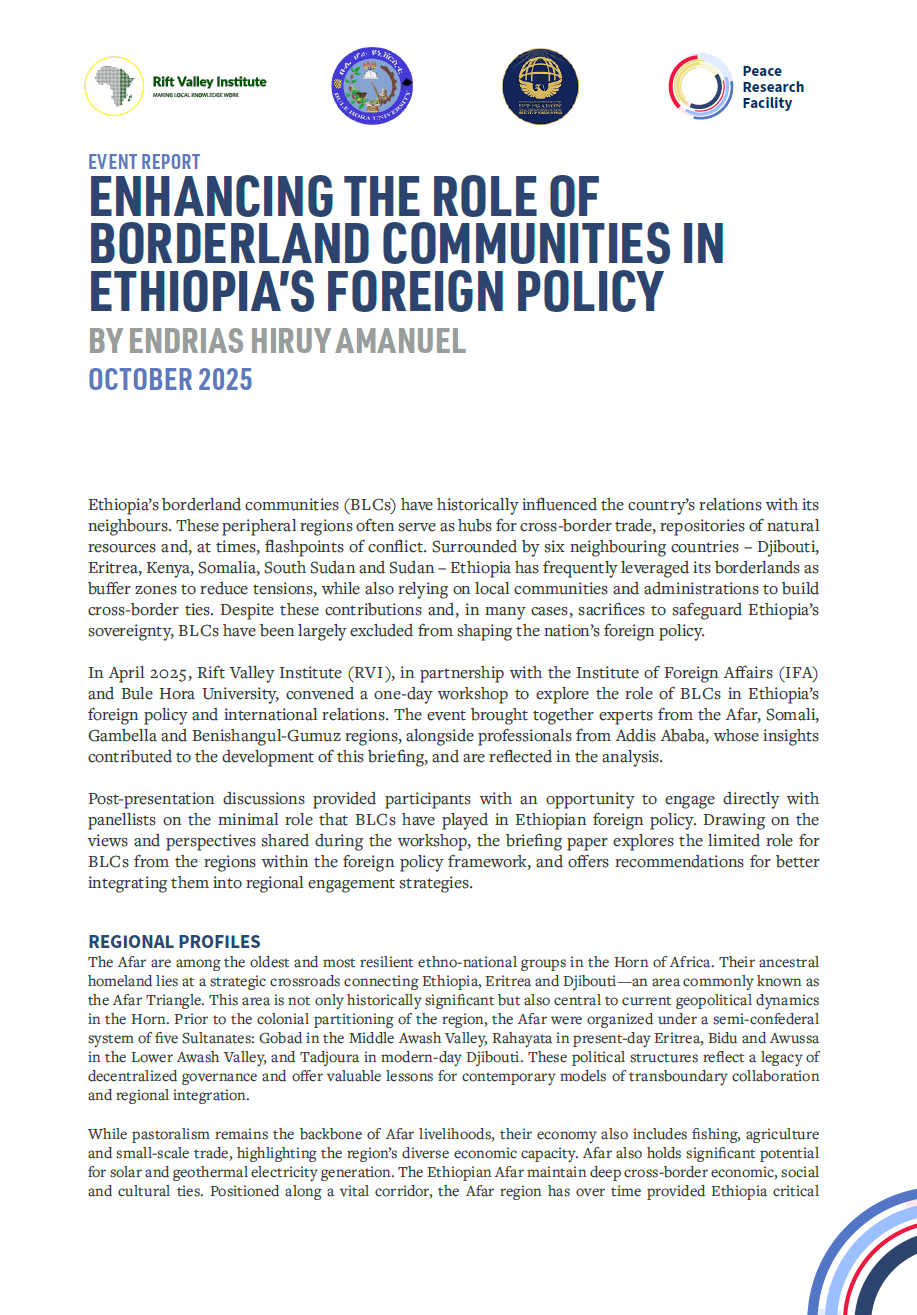Unprecedented levels of investment in ‘green’ resources—hydropower, geothermal, wind, landscapes and wildlife—are a central feature of national development strategies across eastern Africa. Political and business leaders have welcomed this investment for the benefits it will bring to the national population and the local jobs created.
Many of these resource development projects are located at the rural margins—places that are geographically or politically distant from national governments and the international investment decisions that drive new development.
How do people who live in these rural locations ‘see’ and respond to large-scale resource investments?
 These rural margins, inhabited mostly by pastoralists, are on the cusp of significant social, economic and political changes from renewable energy projects. Yet, the progressive vision of ‘green’ resource development, and inward investment in the country’s historically neglected pastoral areas, has exacerbated inequalities and generated new tensions and struggles stemming from the changes.
These rural margins, inhabited mostly by pastoralists, are on the cusp of significant social, economic and political changes from renewable energy projects. Yet, the progressive vision of ‘green’ resource development, and inward investment in the country’s historically neglected pastoral areas, has exacerbated inequalities and generated new tensions and struggles stemming from the changes.
On 16 October 2019, the Rift Valley Forum, in partnership with the Institute of Development Studies at Sussex University and Friends of Lake Turkana, hosted a discussion of initial findings from the Seeing Conflict at the Margins project.
The Forum opened with an introduction to the project, followed by a screening and discussion of videos and photography created by local teams over the past two years. The speakers presented on ways of ‘seeing’ resource development in communities in and around the Lake Turkana Wind Power and Ol Karia geothermal power project and discuss the insights on local people’s perspectives and the research approaches used.
Speakers
Daniel Salau
Carleton University
Everline Parkire
Naduma Africa
Ikal Angelei
Friends of Lake Turkana
Jackie Shaw
Institute of Development Studies
Jeremy Lind
Institute of Development Studies
Michael Ole Tiampati
Eastern and Southern African Pastoralists Network



